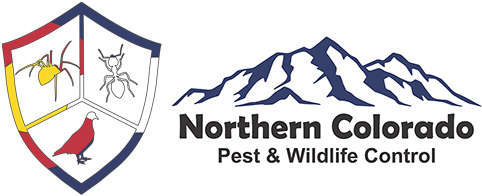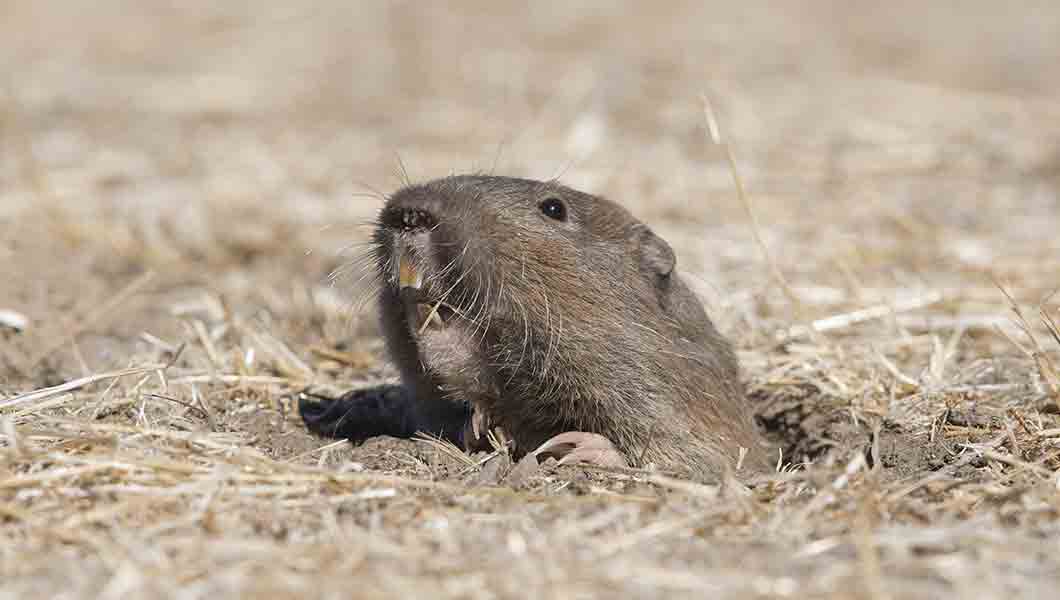Background Information
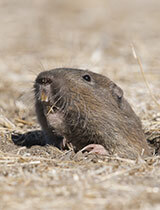
Both pocket gophers and voles are rarely, if ever, seen inside human dwellings. These rodents get a bad reputation from the damage they cause to plants and crops. There are four different species of pocket gophers in Colorado. They are rarely observed above ground because they are fossorial, meaning they live below ground. The pocket gopher is a medium sized rodent measuring 5-14 inches in length. They are typically dark brown in color but can have a whitish marking under their chins. They have incredibly large claws that allow them to dig. Identification is easy because you will see fresh mounds of dirt without any burrow entrance. Voles, also known as meadow mice, are similar in appearance to a mouse but are pudgier. There are eight species of voles in Colorado and they range from 4 to 8.5 inches in length and weigh up to 3 ounces.
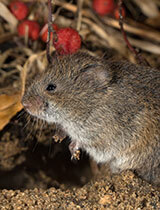
They vary in color between brown and gray, with blunt faces, small eyes and a very short tail in comparison to a mouse. They are known to girdle (strip bark) from woody plants and trees and will eat down runway in turfgrass. They love nesting in juniper bushes and are very common in neighborhoods that are adjacent to open spaces or natural areas.
Treatments for Pocket Gophers and Voles
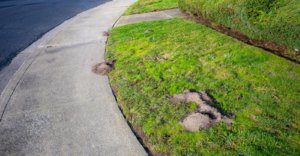
Effective treatment options for pocket gophers include fumigation, trapping and baits. Fumigation can be done in non-residential settings and in areas where there is not a dwelling within 100 feet of the treatment location. Fumigation is a nice tool, because the pocket gopher does not have to accept the bait for success to occur. Trapping is another option but is very time consuming and more expensive. The only benefit to this technique is that you have concrete proof of success with treatment. The most common treatment is burrow baiting. This can be done by inserting a probe into the tunnels, which allows the technician to dispense bait. Other baiting techniques require digging up of the tunnel systems and hand baiting the tunnel systems. Both baiting techniques work great. Vole treatment options are baiting and trapping. Again, trapping can be done if you want a chemical free treatment approach, but it is more labor intensive and generally more expensive. Baiting is commonly done through burrow or surface runway baiting. In some cases, bait stations can be placed to monitor and bait the voles in harborage areas like juniper bushes. Both vole and pocket gopher NOCO Pest and Wildlife Control services come with an initial treatment and a follow-up treatment in 10-14 days to make sure the problem has been eliminated.
Service Expectations
In most cases the initial and follow-up treatment does a great job at eliminating the rodent population. However, with voles there are certain conducive conditions such as vegetation that are attractive to the voles, so and eventually more rodents might move into previously treated areas. If this is a concern, the technician might recommend a preventative service, so we are proactive rather than reactive. Pocket gophers are very similar in that a small, isolated population can be eliminated within two services, but in many cases, their tunnel systems do go across property lines and service only on a single property might not eliminate the entire colony. Preventative services are common to protect crop productivity and ornamentals around homes and businesses.
